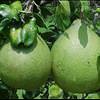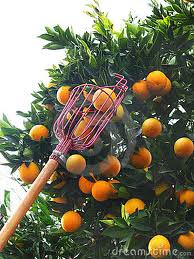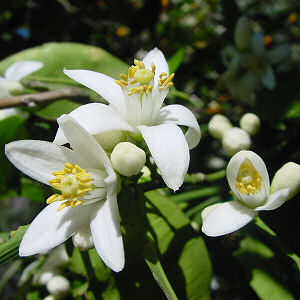This plant may be available to buy
Click the banana to see

|
click pic to enlarge |
|
Zone 9-10 All citrus types are grown basically the same way in Florida
The information below applies to your variety The Orange Blossom is the state flower of Florida
Citrus was introduced into our state in 1565 by Spanish explorers But, citrus trees are not tropical plants Originally from Eastern Asia, like the famous Kaffir Lime, citrus prefers more Mediterranean conditions; ...cooler weather and drier air. For example, much quality citrus is grown in Northern Africa and along the Mediterranean Sea Brazil is the world's #2 producer behind Florida. Areas of California and Texas also have significant commercial groves The bulk of the citrus industry in Florida is not in South Florida (frost free zone 10), but in areas of Zone 9 What citrus can't handle is ongoing frost over 3-4 hours, otherwise cool weather (Florida style cool) is just fine for almost all varieties For example, the Blood Orange (red flesh) will not turn its deep color unless it has sufficient cool/cold weather - not likely in Florida so this variety is not commercially viable in this state To develop maximum sugar content (the taste you like) citrus requires a span of cool/cold nights. Growers welcome a run of cooler weather knowing the sugar content is rising, which is how they are paid for their fruit We get plenty of email asking "how do I know when my citrus is ripe" and that is a good question. The answer at commercial groves is --- they taste the fruit The grower tests/tastes often then when he thinks time is close, he calls in the buyer who is a professional. The pro tastes on site and also takes samples for lab testing to measure the brix, which is a scientific scale of suger in solution. Once the lab says the citrus is ripe, the fruit gets picked for the juicers or the fresh fruit brokers Also, citrus would prefer dryer (air and soil) conditions than most areas of Florida provide However, commercial citrus groves use supplemental irrigation to rain water so trees are not stressed during ongoing dry weather which might cause fruit damage (splitting) Also, commercial citrus is grown on raised beds to insure excellent drainage because excess water can easily seriously damage trees Very often, in the home landscape, citrus trees receive far too much water from sprinklers. If you have citrus, only young trees need added water until they are established. Thereafter, only during near drought (no significant rain for 3 weeks or so) should citrus need or want added water Excess water also produces dry fruit which is a common failure for home grown trees This Calomondin Orange only gets rain water year around Excess water can promote fungus and root diseases. You should shut off sprinklers that might apply water to your citrus trees Also, never allow lawn grasses or any other plants to grow at the base of citrus trees. This is because fungus is the potential lethal enemy. Also, mulch is always wrong ...soil needs to be bare Planting new citrus trees, you should provide full sun, decent soil, very well-drained, preferably on a raised bed/mound. Raising the soil 12 inches or more is advised to insure drainage Citrus is very fussy for proper food. Because soil conditions in Florida are generally organically poor and because citrus is not tropical, proper fertilization is a must for good health and good fruit production In addition to using quality citrus fertilizers, you should also apply "minor element" spray to the leaves at the same time. This product feeds the leaves with much needed elements such as iron, boron, manganese, etc. You may see the product labeled "Nutritional Spray"or similar words Poor leaves on citrus are common as most people do not apply minor elements, but all commercial groves do, two, sometimes 3x per year Some citrus require special conditions. For example, the Key Lime is extremely cold sensitive Citrus should never be pruned Citrus trees are self-pruning, meaning, twigs die off naturally and, over time, break off in the wind Except for food, minor element spray and occasional water, leave your citrus trees alone The citrus flower is famous for its excellent fragrance. Most citrus fruits from October to April in Florida and white fragrant flowers are seen some months before that time Key Lime is among the most desired citrus as a mature tree gives some fruit 12-months a year, but yields soar in summer and fall months. By the way, all limes are yellow in color, as is the Key Lime The green (Persian Lime) you know so well is a hybrid grown for its color and is decidedly inferior to Key Lime in depth of flavor and complexity of taste. Unfortunately, Key Lime fruit for sale in stores is picked too young (often green, typically in Mexico) and does not at all resemble the quality of the naturally matured yellow fruit Key Lime is also the only citrus that does not require picking. Ripe fruit, at the peak of perfection, simply drop off the tree Some citrus, like tangerines, can not be pulled off the tree as that will tear the skin apart. Tangerines need to have stems cut to liberate the fruit. That's one reason tangerines cost more than oranges For us here in South Florida, until recently, we were in mortal danger of losing all of our 3.5 million local citrus trees. Citrus canker is the enemy that is endangering all our trees. Citrus Greening disease is here too. Finally, The State of Florida has given up In summary, grow all citrus like this:
Much, much more tropical fruit is here |





